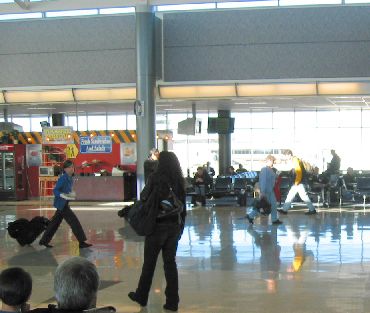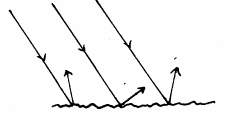
Reflection is an important way to control light. Some light is reflected at every material surface -- but we are so used to this that we just don't notice it. But if you look around the room, you will see glints of light from every bit of metal and glass and smooth plastic, and even the table tops and the floor.

| The smooth floor is almost a mirror. |
A rough surface (like a piece of paper) reflects light in all directions.
This is called scattering or diffuse reflection.

A smooth reflecting surface -- a mirror -- redirects light in a definite
way: the angles A (between the incoming light beam and the mirror)
and B (between the outgoing light beam and the mirror) are the same.

When we look at a mirror, the
reflection that we see is called an image. It's not the real object,
but an image of the object. It appears that the image is located
somewhere behind the mirror. The apparent location of the image is
a direct consequence of the angle law we just described.

For a flat mirror, the image is just as far behind the mirror as the
object is in front of it, and is the same size.
Box:
What have we learned about mirrors?